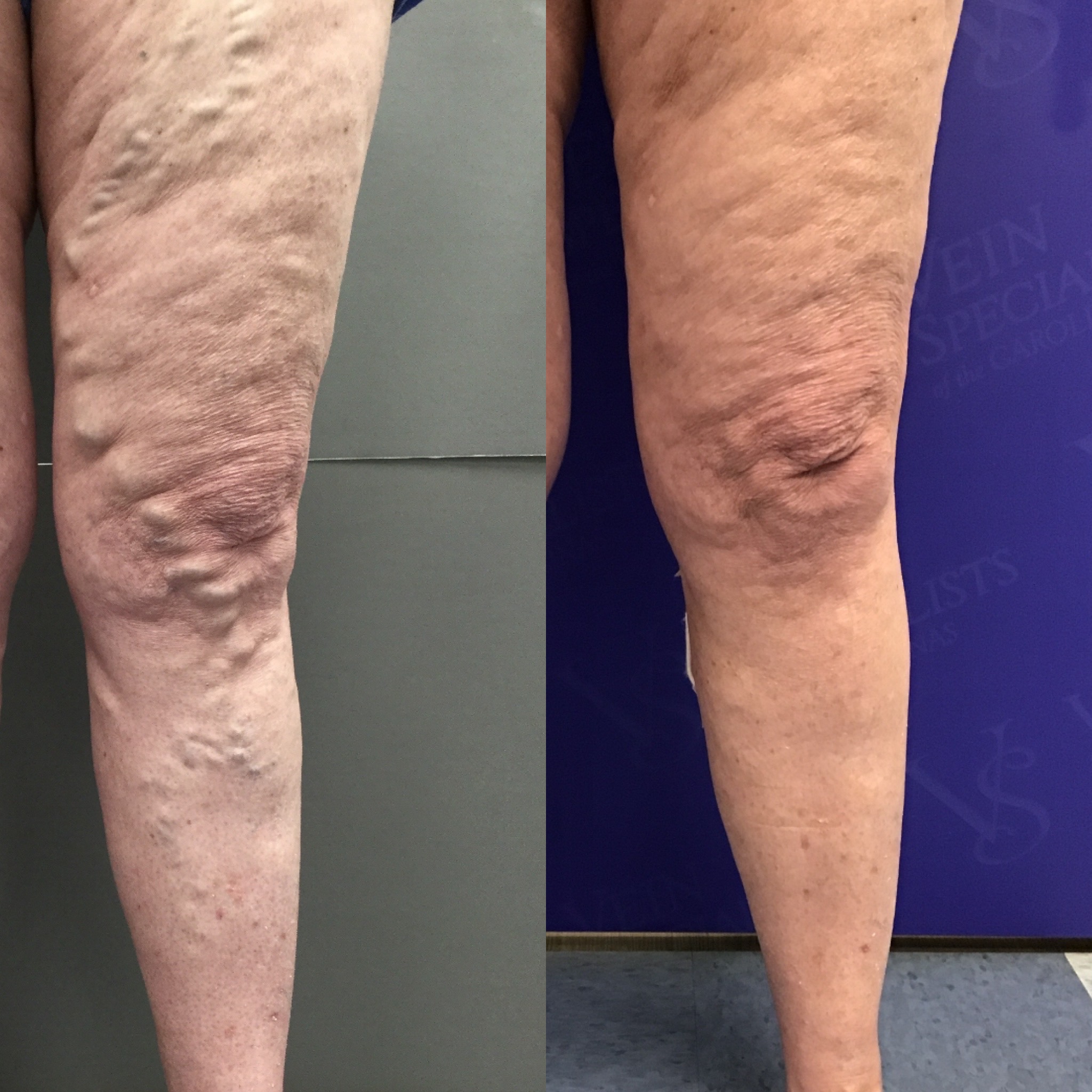If you are looking for a way to say goodbye to unsightly spider veins or uncomfortable varicose veins, you have many effective options today.
The world of vein treatments has significantly expanded in recent years to encompass a wide range of minimally-invasive procedures that can be tailored to the unique needs of each patient. By learning about the similarities and differences between these procedures, you will better understand the specific procedure your physician chooses for your own treatment.
There are three layers to the superficial venous system. Each has different treatment options. Some options can be used on multiple layers.
The inner most layer of veins consists of the Great and Short Saphenous veins and some accessory Saphenous veins that lie just outside the muscle layer. When abnormal, damaged one-way valves cause reverse blood flow known as reflux. These may be the underlying cause for varicose and spider veins and are the main reason your legs hurt.
The middle layer of veins is in the fatty tissue under the skin and when abnormal become large ropey varicose veins.
The outer most layer is in the skin and when abnormal are known as spider veins.
Radiofrequency (RFA) and Laser in Vein Treatment (EVLT)
These are used on the saphenous system. They are referred to as “thermal” treatments because they heat the inside of the veins to damage the inner lining and muscular portion of the vein wall so that it scars closed and stops reflux. Blood naturally reroutes to healthy veins nearby.
Because they require heat, a numbing solution (tumescent anesthesia) must be injected around the vein to keep it from hurting.
When thermal treatments are performed by an experienced vein specialist like Dr. Draughn at Vein Specialists of the Carolinas, they are both safe and effective. They are currently the Gold Standard for this layer.
Non-Thermal and Non-Tumescent Procedures (NTNT)
These are also used on the Saphenous layer. NTNT vein treatments are those that do not use heat and do not require any injection of tumescent fluid. One method uses a mechanical spinning wire and a liquid sclerosant to damage the inner vein lining. Another uses cyanoacrylate glue (a version of superglue that works when wet). The final type uses an injectable foam to damage the vein wall. These are newer and are approaching the effectiveness of the thermal treatments, but patients must be carefully selected for these to be the best option. Insurance may not cover these.
Microphlebectomy
This technique is used on the middle layer of varicose veins. The varicose veins are marked with the patient standing to make them bulge out best. The skin and tissue around the varicose veins must be numbed up first. A tiny incision, about 1/8th of an inch, is made over the bulging vein. A tiny hook is then used to extract the varicose vein. Bleeding is negligible because the patient’s legs are elevated and the loose ends of the veins clot easily. This removes the varicose veins immediately. You do not have to wait weeks or months to see the results. There are no scars. Bruising resolves as usual in a week or two. Sometimes this is done at the same time as RFA or EVLT.
Sclerotherapy
Sclerotherapy is the injection of a caustic solution into a vein to damage it. The vein is eliminated by natural body processes over 4-8 weeks. This procedure continues to be the “gold standard” in spider vein treatment. Innovations in sclerotherapy have made it a good option for some varicose veins and some saphenous veins.
Sometimes we use liquids for sclerotherapy. Other times we use foam, which is a blend of liquid and air or CO2. This foam solution does a better job of displacing blood in larger vessels, but trapped blood can leave a brownish stain on the skin and may need to be released with a skin puncture later.
Your physician will determine which technique will provide you with the best results.
Patients that undergo sclerotherapy typically find the procedure to be tolerable and effective. There may be a slight burning sensation as the solution goes into the vessel, but that is short-lived. Patients can return to regular activities as soon as their sclerotherapy treatment is over and full results should become apparent within a few weeks.
Making the Right Choice
The best person to help you choose the right vein treatment for your needs is a physician that specializes in treating spider and varicose veins. These doctors spend all their time working with vein disorders and treatments, so they will make an accurate diagnosis of your condition and select the most effective procedure for you. Dr. Draughn works with patients throughout the Carolinas, helping them to achieve the positive cosmetic results they are looking for as well as relief from painful symptoms.


